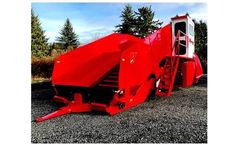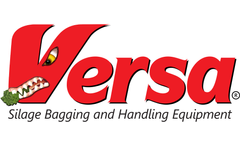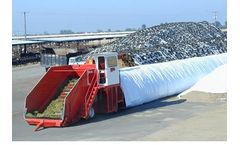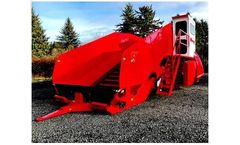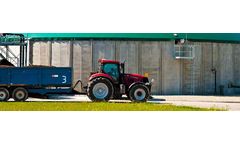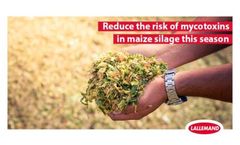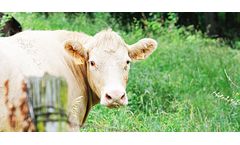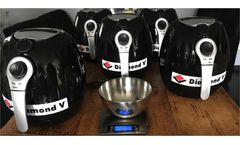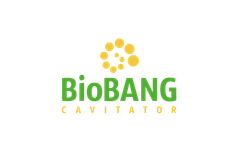Refine by
Silage Articles & Analysis: Older
72 articles found
Cattlemen are increasingly turning to bagged silage for flexible feed management. The most fundamental beef cow feeding strategy remains the use of pasture, which is considered the lowest-cost feed resource. ...
Dairy farm consultants and equipment suppliers weigh in on the benefits of properly packed bags, as well as feed management tips to obtain the highest nutrient density feed to promote herd health and production. Silage is critical to dairy farm operations. Compared to hay production, silage increases the potential yield of nutrients from available land, ...
So what’s to know about the differences of silage storage in bags as opposed to piles, bunkers, trenches or dry hay? Plenty! Bagging Silage has been proven to be more cost-effective as well as providing better herd health. ...
However, dairy farmers are increasingly turning to high moisture corn silage, specifically snap I age/earl age, due to its high energy content and easy digestibility. ...
Dairy farmers are bagging silage to reduce spoilage by up to 30%, increase nutrient value and milk production, improve herd health, and potentially earn environmental carbon credits. ...
Coryniformis Si3, isolated from grass silage, was able to inhibit the growth of a great number of mycotoxinogenic moulds includingAspergillus fumigatus and Aspergillus nidulans, Penicillium roqueforti, Fusarium poae, F. graminearum, F. culmorum and Fusarium sporotrichioides(Magnusson & Schnürer, 2001). ...
Therefore, the intake of superior quality TMR and silages can help to reduce costs and increase profitability due to the lower amount of feed supplements needed. The most common dairy cattle feed is TMR and ...
Water systems are now made mainly from plastic due to their strength and resistance to corrosion, whilst plastic is also heavily used in silage to keep animal feed and straw protected all through the winter. ...
Lunen Location: Lunen, Germany Output: 2.4MW Electricity Input Materials: Maize Silage, cow and pig slurry. ...
When they are, February and March are the best months to spread slurry on silage ground in regards to nutrient recycling. The most efficient use is made of the nutrients in slurry where it is spread early in the growing season. ...
When the clamp is opened, oxygen will penetrate faster, re-activating the yeasts and leading to aerobic spoilage and wasted silage,” says Mrs Colahan. “New metagenomic trial data which looked at bacterial levels in maize silage treated with Magniva Platinum Maize over a 10-day period, found that after being exposed to oxygen, the pH of the treated ...
Mg absorption occurred prior to the small intestine in cows and steers fed grass hay or silage diets (Khorasani & Armstrong, 1992). They found that net Mg absorption occurred also in the small intestine and both net absorption and secretion in the large intestine. ...
Also, some rations contain high amounts of corn silage or other wet or acidic ingredients. In these situations, supplemental buffers are needed for optimum rumen function and milk production. ...
Measuring Dry Matter Accurately On-Farm With an Affordable Consumer Appliance When assessing the health and productivity of your dairy herd, dry matter intake (DMI) is one of the key data points to consider. If DMI is low, productivity suffers no matter the quality of the ration. Moreover, with low DMI, maintaining cow health becomes that much more ...
Plant’s power: 1400 kW/h Daily Feeding: Barley silage; sugar beet pulp; grain; corn silage; potatoes peelings; mustard skin Goal: Reduce the viscosity to increase the concentration of Dry Matter from 12% to 17% and thus increase the production of gas, keeping the same digester’s volumes Read more To see video, please click ...
Plant’s power: 1200 kW/h Daily Feeding: 26 t corn silage, 10 t chicken dung, 2 t rye flour Goal: Shredding the content in the fermenter to decrease the viscosity To see video, please click ...
Plant’s power: 750 kW/h Daily feeding: Corn silage, Flours, Chicken Manure, Cattle Slurry Goal: Increase the gas production, Eliminate flours, reduce the quantity of corn silage and increase the Chicken manure quantity. ...
Plant’s power: 1800 kW/h Daily feeding: Corn Silage, Pig manure with straw, Straw Goal: to reduce the viscosity in digesters and increase the yield of gas from the straw. ...
Plant’s power: 800 kW/h Daily feeding: corn silage, clover, cattle manure with straw Goal: to reduce the viscosity into digesters and to reduce the corn silage percentage To see video, please click ...
Plant’s power: 500 kW/h Daily feeding: Corn silage, triticale silage, cattle manure with straw Goal: optimize the cost of the daily feeding, increasing the amount of cow manure with straw and reducing corn silage To see video, please click ...

